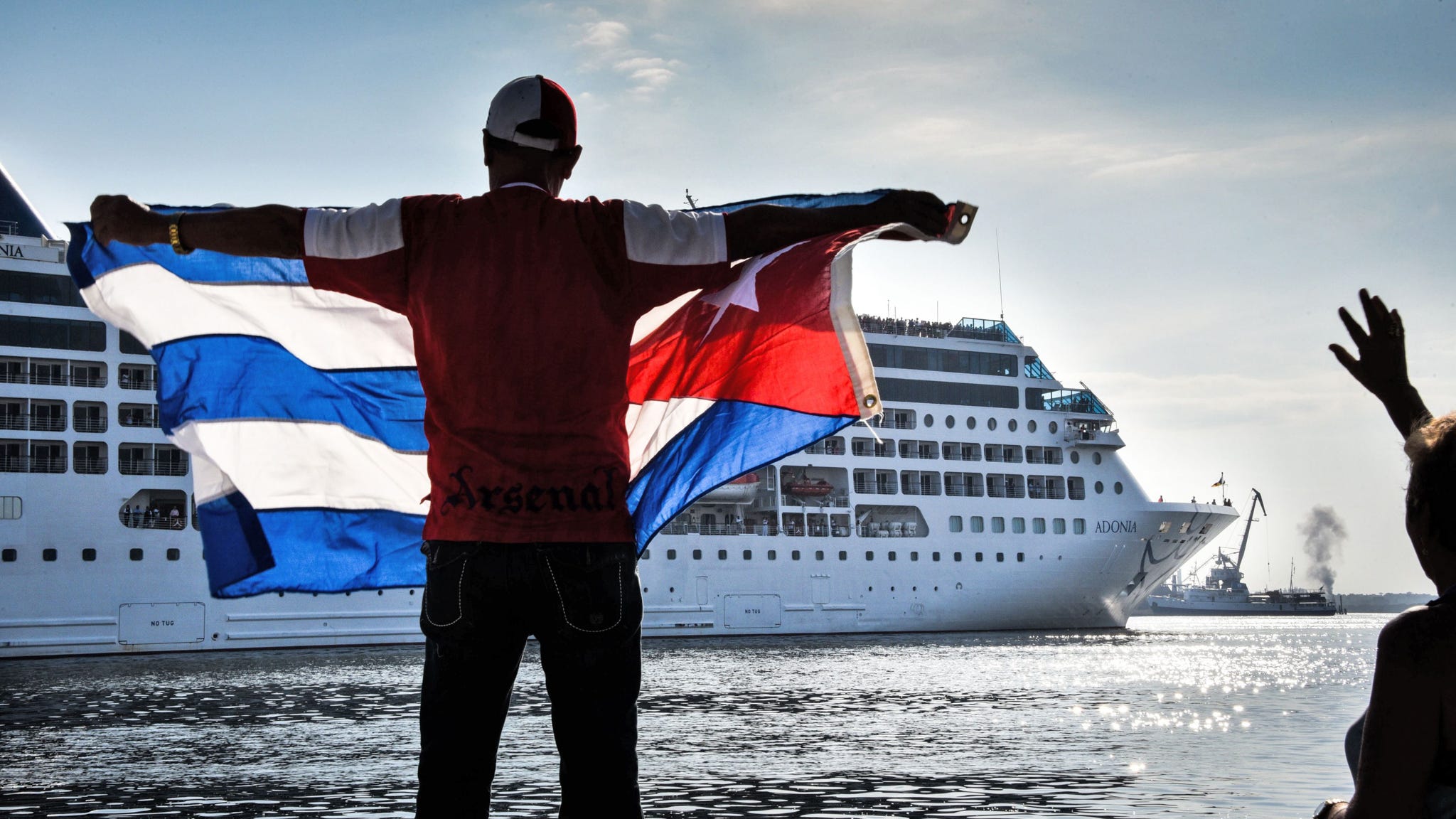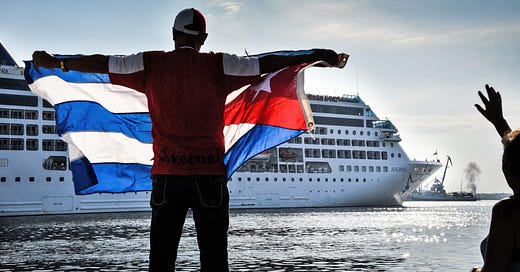My Family Fled Communist Cuba. Last Week I Took a Cruise There.
With memories of torture and misery imprinted on their minds, my grandparents can’t understand why I’d ever want to visit Castro country. But when the first U.S. cruise to Cuba in fifty years set sail, I just had to be on board.

Photo by Adalberto Roque/AFP/Getty Images
I am about to step foot on the Fathom Adonia, the first passenger ship to leave the United States for Cuba in over fifty years. The bustling Americans lined up in front of me are ready to get their cruise cards and board this historic journey, sunblock and sunhats in tow. There’s excitement in the air; media everywhere, taking pictures, asking questions: How does it feel to finally be going to Cuba?
For me it feels like a hurricane is making its way through my gut. The ghosts of my family’s stories are bumping up against my skin, from the inside out. I’ve been like this for weeks, from the minute I reserved my ticket.
Keep reading with a 7-day free trial
Subscribe to Narratively to keep reading this post and get 7 days of free access to the full post archives.



